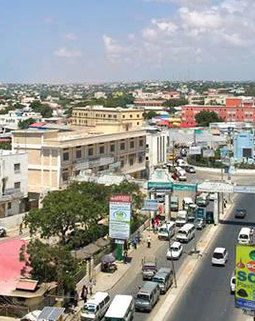Brakes are essential parts of an automobile. However, faulty brakes can make waves. Well maintained cars may also experience brake failures and mainly when hit by lightning.
The safety of drivers and passengers rely on the effectiveness of brakes. Imagine if you are riding or driving on a sloppy terrain then brakes fail. Besides you were at high speed. You do not have to play with lion’s tail! The situation becomes worse if you cannot establish the cause of faults in your brakes.
We recommend that before driving, you examine the brakes consistently. You can carry out a static or rolling brake test. Static check involves pressing the pedal when you get into the car to check the resistance of brakes. Rolling check involves gently pressing of the brake pedal immediately after taking off. If the brakes are okay, do you consider the probability of them failing while you drive? Are your brakes safe for a long drive or ride? This article will act as a whistle-blower. Yes, we shall reveal the most common brake problems and their solutions.
Here are the most common brake problems.
Experiencing one side pull while braking
It is mainly caused by a frozen caliper. Whenever you apply braking force and notice that the car pulls on either side, it is an indication of a problem in the car braking system. The caliper freezing may take long time since the process is gradual. Moreover, the problem is hard to notice. A side pull occurs when pressure is subjected to the pads. In case the piston on the caliper sticks in its bore, this can also lead to freezing of the piston.
Other leading causes of this problem include rusting, bending or corrosion of the piston. The slide pins can at times lost lubrication due to lack of maintenance. If this is the case, you need to clean, lubricate or replace the slid pins. If slid pins are not the issue, then you need to buy the whole kit of calipers. Purchasing another kit of the caliper is costly. However, that will be better than visiting a garage every time.
Other minor causes of this problem can be problematic master cylinder, faulty proportioning valve, worn rotors or leakage of brake fluid. Allow only qualified technician to rectify the problem after you identify it.
Vibration of steering wheel
This commonly happens when one is at high speed. The causes of this problem can be extreme heat affecting the pad impressions, front rotors being warped or rotor hot spots. Rotors may rust because of failure to drive your car for long. Moisture from high humidity or rain causes the rotors to rust leaving the patch of rotor surface. The best solution to this is by resurfacing the rotors or replacing it. Resurfacing is cheaper than replacing it. However, one can only resurface the rotor when they have adequate thickness. Remember rotors have a minimum thickness. Rotors should be measured at the thinnest point using vernier caliper or micrometer to know if it can be resurfaced.
Up and down pulsation of the brakes
Warping of rotors also causes pulsating of brakes. The rotors lose their shape with time due to the constant heating and cooling effect subjected to them with time. It is common to those using highways and tends to apply brakes every time. The appropriate remedy involves resurfacing of the rotors. Moreover, remember that this is possible if rotors are thick. If not, then replace them for the better of your life and car.
Brakes make unnecessary noise
Brakes should produce little or no noise when applied. However, at times they may produce groaning, squeaking or grinding sound when applying pressure on the pads. In case that happens, you need to take your vehicle to a garage for immediate check-up. The brakes might require adjustments in one way or the other. The noise might also be because the wheels are loose. Additionally, poor caliper alignment and excessive rotor run can cause this problem.
Inadequate resistance on the pedals when engaged
The problem comes in when the brake pedals are soft or spongy. Sometimes, the brake pedals can sink to the floor with little or no resistance. This is the most severe problem with brake pedals, and you should not risk driving anymore. Once this happens, the vehicle will not stop on the way when applying brake force. This problem is mainly linked to leakage in the braking system. The common leakage comes from the master cylinder, and the leakage can occur either internally or externally. The first step for rectifying such problems is by checking your brake fluid system. Remember that an external leakage occurs when the brake fluid is full hence forcing some fluids out. If that is not the case, then there might be an internal leakage. However, that cannot be seen by just looking at the master cylinder.
We recommend that you first check and see if the master cylinder is leaking. You will notice the fluid on the brake pedals and especially the carpet under your dash. That is in case it is an external leakage. The most recommended solution to the problem is replacing the whole master cylinder with a new one. Besides, this is an integral part of the vehicle that should not be rebuilt.
The problems above can cause you many problems or even take away your life if not solved. As a driver, take immediate action whenever you notice any of these causes of brake failures. We advise that you be taking your car for a regular check-up to improve the safety of your vehicle by fixing the problems. Regular checking can also help you save your money and time. Chime in with a comment here so that we also know your thoughts.





